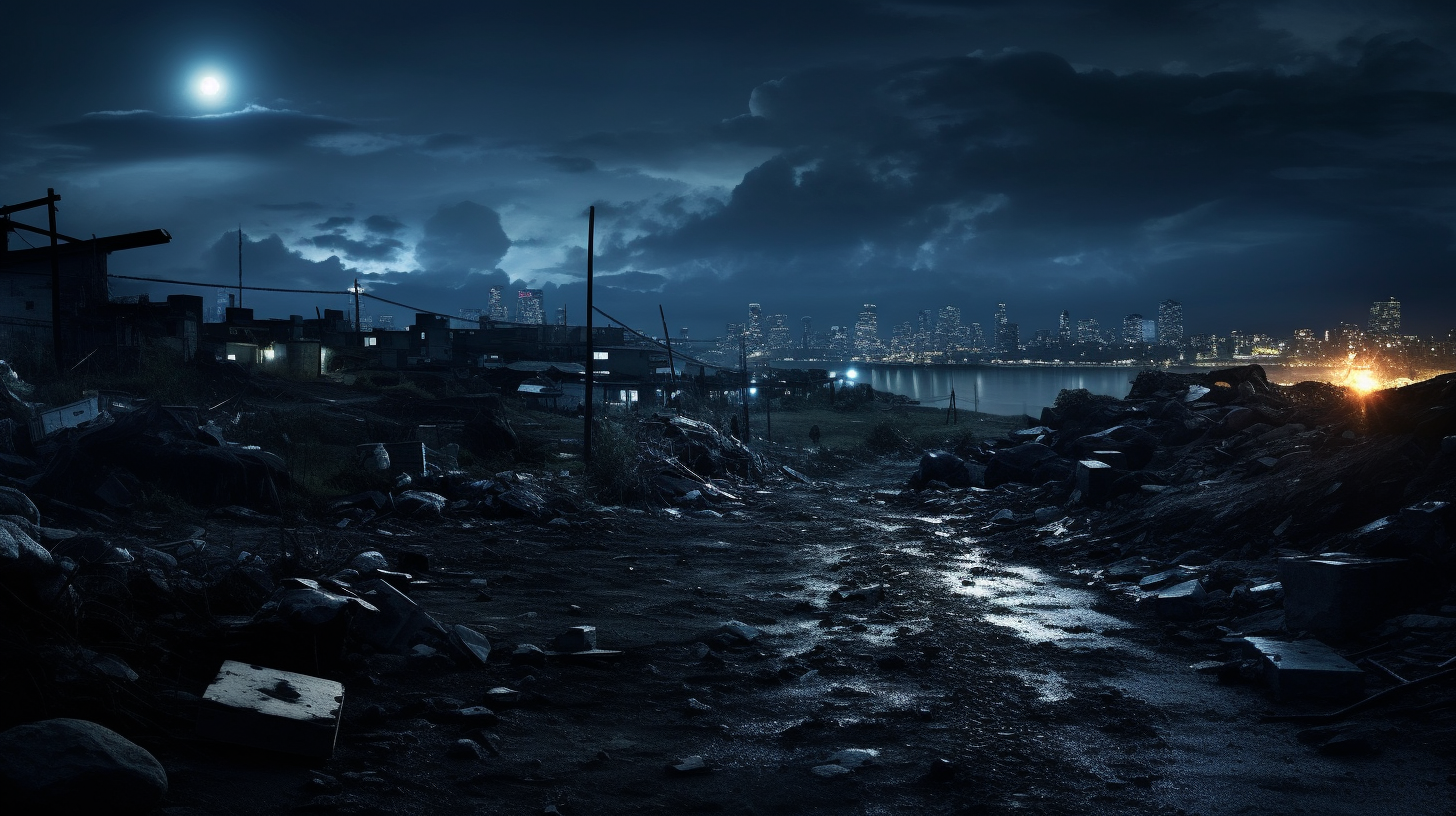In the suffocating grip of a world ensnared in its own industrial embrace, the starry tapestry above has become a mere legend, a fairy tale eclipsed by the relentless glare of artificial lights. Amidst the noise and smog, ‘Night Skies No More, The Age of Artificial Illumination’ takes readers through a profound journey into the heart of darkness – a darkness that paradoxically no longer exists or hides under the blinding artificiality embracing our world.
Once, humanity stood under the open sky, basking in the silver glow of the cosmos, charting stories, futures, and destinies in the constellations. But as this dystopian present unfolded, where environmental disregard festers in every corner, the night sky became a casualty in humanity’s crusade for perpetual daylight. The age of artificial illumination is not just a phase; it’s a permanent scar, with streetlamps and neon signs washing away the galaxy’s grandeur in a torrent of photons.
Our concrete jungles, now bathed in a dull orange haze, feign security and progress, but what of the cost? Astrophysicists desperate for a glimpse of the universe’s origins now vie for time in isolated enclaves, sheltered from the ever-encroaching light pollution. The ‘Urban Glow’, as it is drearily called, has not just stolen our view of the heavens but also disrupted ecosystems, with nocturnal creatures thrown into disarray, their evolutionary dance with darkness turned into a chaotic stumble.
Echoing the perils of our solar abandonment, this narrative ties in heavily with the previously articulated musing on the ‘Solar Wraiths’. Like the eerie tombstones of ambition in solar technology, the artificial skies are a testament to our pursuit of dominion over natural cycles. In the grand theater of light versus dark, it seems light has been cast as the ever-present, unyielding actor, a beacon in the narrative of our disconnection from the cosmos.
In a bitter poetic jest, areas decimated by environmental catastrophes are now the coveted havens for astronomers. These ‘Sanctuaries of Silence’ exist only because they’ve been forsaken by modernity, fallout zones where the skies are unintentionally preserved. Here, the stars peek through tentatively, a vestigial reminder of what has been forfeited in the wake of artificial light’s ascension.
It’s in this ironic salvation that the story finds its heartbeat, nestled within the dichotomous reality where light both reveals and blinds. Our perception, once guided by the natural day-night cycle, is exploited and overwritten, leaving our bodies and minds beckoning for the rhythmic order that once governed them.
Through conversations with the night’s disenfranchised – from the layperson who has never glimpsed the Milky Way to the scientist mourning their obstructed research – this piece paints a canvas of current consequences and future implications.
The ‘Age of Artificial Illumination’ beckons contemplation: What have we become in our denaturing gluttony, cloaked in the luminescence we’ve engineered? Is our self-inflicted exile from the celestial realm purely symptomatic of progress, or is it a harbinger of an environment with no room for the natural order?
Amidst these ponderous themes, a celestial chorus seems to resonate with a silent query – is there still magic in the darkness we fear, nestled in the night we’ve banished?
As we pave this luminous path to ecological dystopia, the article invites readers not merely to observe, but to see – see what lurks beneath the incandescent shroud we’ve draped over the planet, and perhaps to seek answers in the sporadic points of natural light that linger, defiant in the face of human conquest.
